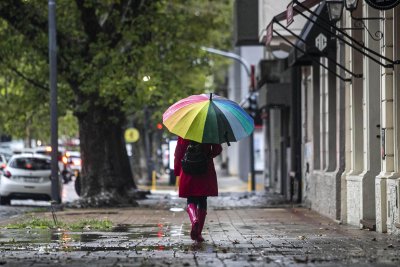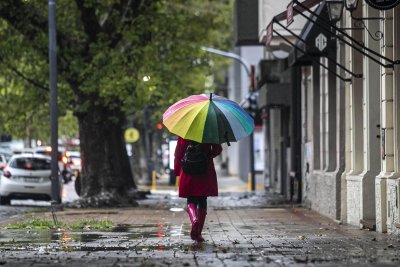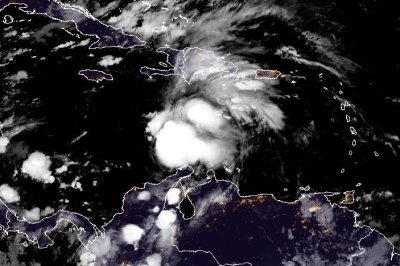Record rains in Buenos Aires leave more than 12 million acres of farmland underwater

Record rains in Buenos Aires have left acres of farmland underwater. File Photo by Demian Alady Estevez/EPA
BUENOS AIRES, Nov. 7 (UPI) — The agricultural sector in Buenos Aires province is facing a severe crisis after the worst flooding in decades inundated farmland in the central and eastern regions.
The Confederation of Rural Associations of Buenos Aires and La Pampa estimates that nearly 12 million acres of farmland have been affected after heavy rains exceeded about 67 inches in several rural areas, far above the historical annual average of about 35 inches.
This situation has halted the planting and harvesting of key crops such as soybeans and corn, with rural roads rendered impassable and flooded fields preventing machinery from operating and blocking the transport of supplies and production.
María José Gentile, mayor of Nueve de Julio, one of the hardest-hit localities, told UPI that nearly half of the county has been affected by flooding.
“This area is known for producing crops such as soybeans and wheat, as well as livestock. Many farmers have lost part of their production and have had to move their cattle to higher ground or rent land in other areas,” Gentile said.
She added that some areas are under more than 3 feet of water and could take months to dry.
Graciela Vadillo, a livestock and grain producer and former president of the Nueve de Julio Rural Society, told UPI that most fields are underwater or inaccessible because of damaged roads.
“This will not only affect farmers’ finances but the entire production chain,” she said.
Much of the grain produced in the region is sold to national distributors that later export to Asian markets and the United States. In the livestock sector, many of the highest-quality cuts are also exported.
Hugo Enríquez, president of the Nueve de Julio Rural Society, told UPI that the city has about 506,000 acres of land flooded out of a total of about 1.06 million acres. Of those 506,000 acres, about 65% is used for livestock and 35% for crops.
“Buenos Aires province has around 6.7 million acres underwater. Much of it is in the core productive region,” Enríquez said.
He said cities such as Nueve de Julio, Carlos Casares, Pehuajó, Olavarría, 25 de Mayo and Los Toldos, all agricultural areas, have more than 8.6 million acres affected by impassable roads and partial flooding.
Regarding losses, Enríquez said that flooding has destroyed about 8% of the most recent harvest, mostly soybeans, since about 49,000 acres cannot be reached because the roads are impassable.
Buenos Aires province plays a key role in Argentina’s agricultural and livestock production, standing as the country’s largest producer of beef and pork, with more than 50% of national slaughter.
Its production includes both livestock and crops, and although the region historically maintained a more balanced agricultural-livestock mix, the acreage planted with crops such as soybeans has expanded significantly in recent decades, displacing livestock in some areas.
In response to the situation, Security Minister Patricia Bullrich and Cabinet Chief Manuel Adorni announced Wednesday that the federal government will take charge of the emergency.
“The national government, through the Federal Emergency Agency, has decided to make all necessary resources available to confront this dramatic situation,” Adorni said at a news conference.


